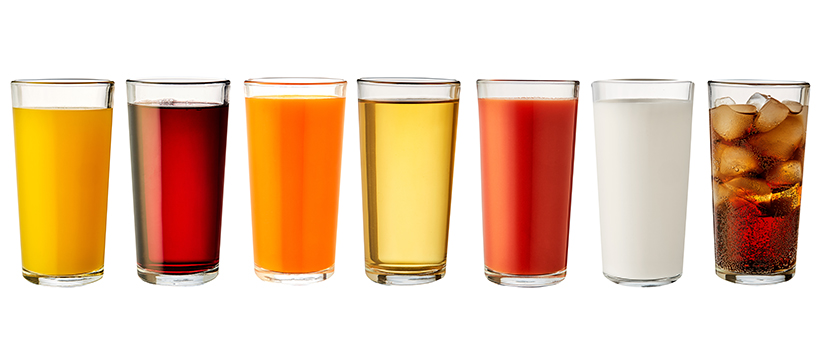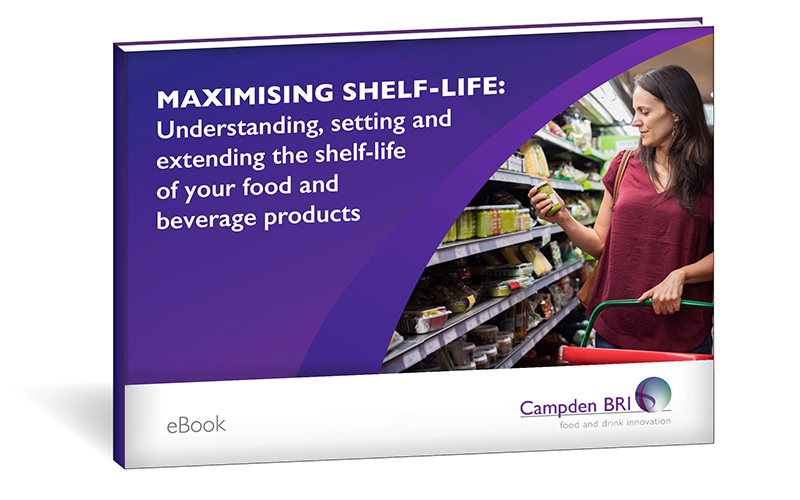
Understanding and maximising the shelf-life of drinks
17 April 2023 | Sarah Chapman, Product Development Specialist
Across the many different types of soft drinks on the market – from chilled, short shelf-life, milk drinks, plant-based drinks and juices, acidic shelf stable (ambient stable) squashes, juices and carbonated drinks, to ready to drink coffee, tea and shelf stable plant-based drinks – there are a range of different shelf-lives, as well as a variety of different factors facilitating and limiting them.
Before planning a shelf-life trial, manufacturers must identify what factors limit the shelf-life of their drink. Better still would be to consider this in the early stages of product development, where knowledge of these factors and how to overcome them can give you the power to maximise shelf-life through product design.
Download the complete Maximising Shelf-life eBook, for free, to unlock the tools for measuring and maximising the shelf-life of your food and drink products whilst ensuring their safety and quality.

To support that journey, this blog shares some context for the various shelf-life lengths within the soft drinks category, focussing specifically on maximising the shelf-life of shelf stable drinks by overcoming the factors that limit their quality shelf-life.
Some example drinks and their shelf-lives
For very short shelf-life chilled juices, and plant-based and dairy drinks, shelf-life is typically limited by microbiological growth. For freshly squeezed juices where no heat process has been applied to the product, microbial growth (typically spoilage microorganisms) will result in a very short shelf-life of just a couple of days and therefore there are fairly few of these types of products available.
A mild flash pasteurisation through a high temperature short time (HTST) pasteuriser, followed by clean filling will help to prolong the shelf-life of a chilled drink. Often microbiological growth may limit shelf-life (with the pH and other intrinsic properties of the drink affecting whether this is pathogens or spoilage microorganisms) but there are also cases where quality changes, such as in colour or flavour, could be the limiting factor.
Long life juices are fully pasteurised (typically for longer time / at higher temperatures than the mild process mentioned previously) and then aseptically filled (usually into cartons) for a long ambient shelf-life. Dairy and plant-based drinks, due to their more neutral pH, will require a full sterilisation (UHT; Ultra-high temperature processing) combined with aseptic filling in order to achieve an ambient shelf-life.
For basic carbonated drinks (based on sugar/sweeteners, flavourings and acid) that do not contain fruit juice, a combination of preservatives and the carbon dioxide can limit microbiological growth. In these products, quality factors such as appearance or changes to the flavour profile may limit shelf-life. There are many carbonated and still shelf stable, juice-containing drinks on the market, often packed into cans or glass bottles and then pasteurised in tunnel pasteurisers. In this case the shelf-life will be limited by quality factors.
Understanding the quality deterioration that can occur to shelf stable drinks can help developers design their drink product and its production process to facilitate the longest possible shelf-life.
What limits the quality shelf-life of shelf stable soft drinks?
To maximise the shelf-life of shelf stable beverages, you must first seek to understand the factors that influence / limit and extend their shelf-life, and how these are typically overcome and leveraged respectively. Some of the key factors are as follows.
Oxygen is very damaging to drinks. Oxygen effects the stability of colours and can cause off flavours. Citrus flavours in soft drinks are particularly susceptible, as when the flavouring oxidises, off flavours can be produced that will limit the shelf-life. Some colours are also susceptible to fading in the presence of both oxygen and light.
During the manufacturing process, products are often exposed to air/oxygen during weighing out, mixing, transfer and filling. All reasonably practicable measures should be taken in the production process to limit the amount of oxygen that ingredients / products are exposed to. Mixers can be designed to limit the amount of oxygen incorporated and deaerators can be used to reduce the amount of air in the product, prior to filling. The filling process should also be designed to avoid the inclusion of oxygen, for example by reducing the oxygen level in the filling environment by replacing it with another gas such as nitrogen.
Light exposure can cause fading of both naturally present and added colours. If oxygen is also present then this impact is heightened. For example, over time in a beverage, beta-carotene can be completely destroyed by exposure to light – this can be prevented by the inclusion of ascorbic acid (vitamin C).
Packaging selection can impact shelf-life. For example, plastic bottles vary in their permeability to oxygen and may not be suitable for some products where a long shelf-life is required but flavour and colour of drink is susceptible to oxidation.
The selection of the optimum packaging can limit the effect of light but may mean that the consumer is unable to see the drink when it is on the supermarket shelf. Selection of the most light stable colours at the development stage can also help to minimise colour changes.
Storage conditions, for example exposure to a high ambient temperature over storage, will also affect the rate of quality changes. Above 20°C there are likely to be detrimental changes to both flavour and appearance. If product is to be sold in countries where storage temperatures are higher then this must be considered when setting shelf-life.
The type of heat process applied, and whether or not one is applied at all, can affect the length of shelf-life that is possible, as explained in the examples section. But harsher processing does not always equate to a longer shelf-life; over pasteurising drinks can result in a shorter shelf-life. It is therefore important that drinks are pasteurised for the minimum time required to ensure that the target microorganisms are destroyed, and then are cooled quickly – to ensure the best quality and least deterioration in sensory attributes over life and to avoid the development of a cooked flavour.
Formulation and ingredients have a part to play too. For example, the inclusion of some vitamins and minerals into soft drinks can cause unwanted flavour changes over life. Conversely, carbon dioxide and preservatives can limit microbiological growth and thereby facilitate a longer shelf-life in other drink products.
Raw material selection can also limit shelf-life, and it is important to consider the age of ingredients, which can often be sourced from across the globe. The temperature and light conditions that raw materials have been stored and transported under can affect their initial quality and the subsequent shelf-life of the final drink.
Maximise the shelf-life of your drink products
Shelf-life is best considered early in product development, as this is often the stage where it can be most effectively maximised through product design. Despite this, there are still strategies that you may adopt to extend your product’s shelf-life through reformulation / innovation / renovation of your product’s recipe, processing, packing, packaging and storage.
Increasing the length of a product’s shelf-life can bring improved profit margin and efficiency and reduced waste, and offers many potential benefits to manufacturers, retailers and consumers. Any shelf-life extension project, however, must be carefully considered to ensure that product safety and quality are not compromised.
We provide tailored, expert support in all areas of shelf-life evaluation, maximisation and extension, and have specific expertise in microbiology, chemistry, sensory, regulatory and product innovation services. Get in touch to discuss how our experts can identify opportunities to maximise and extend shelf-life, and support their implementation for your drink products.
How can we help?
We have more than 200 scientists and technical experts collaborating on a wide range of projects every day. Get in touch if you’d like their support with a shelf-life project.
Download our FREE Maximising Shelf-life eBook today!
Explore different strategies to maximise and extend product shelf-life, without compromising safety or quality.






